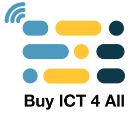Indian rights leader promotes procurement as key to digital accessibility
Posted on June 13, 2017

Global Chair of Disabled People’s International
Understanding of accessibility is often limited to a ramp and an accessible toilet. In countries where understanding of disability is so poor, acceptance of the need for digital accessibility takes a backseat. Reasons for this are many - ignorance, limited understanding, lack of technical know-how and trained resources for implementation. And, for this reason, thousands of websites, applications, software, products, and information continue to be developed, designed and procured, inaccessible for potential users with disabilities.
It becomes even more inexcusable in a country like India, considered the hub for path breaking innovations in technology. India is also at an interesting point in the history of its disability rights movement. The new Rights of Persons with Disabilities Act, 2016 clearly mandates adherence to accessibility standards for both physical and digital (ICT) accessibility, dovetailing into the Accessible India Campaign launched by the Government in 2015. As India moves towards a digital and cashless economy with an increase in online citizen engagement platforms, digitalization of services, and flagship programmes like ‘Digital India’ and ‘Smart Cities Mission’, it becomes imperative that the 70-100 million disabled citizens of India are not excluded from these developments.
The starting point for this should logically be the Government, making inclusion of accessibility features mandatory for all public procurement. In India, the Government alone spends about 30% of the GDP on public procurement. The opportunity to promote goods and services that are accessible for all is immense and the only way this can be implemented is if accessibility is introduced as key criteria in the Public Procurement Policy. This will also help build domestic expertise in creating accessible and affordable products and services.
But in the absence of a procurement law in India, individual departments are revising their procurement policies for products, services and works, each working in silos with the General Financial Rules (GFR) and some procedural Manuals under the Ministry of Finance acting as overarching guidelines. In complete variance to the provisions of the Rights of Persons with Disabilities Act 2016, the newly revised GFRs-2016 has no mention of accessibility!
This is also completely obverse to the instructions issued by the high level Committee of Secretaries (CoS) set up to oversee the implementation of the Prime Minister’s flagship, ‘Accessible India Campaign’, on making public procurement of accessible IT hardware and software mandatory. The CoS further instructed the Ministry of Electronics and Information Technology and Director General Supplies & Disposal that overlooks the Government e-Commerce Marketplace (GeM) to prepare accessibility specifications for IT hardware and software in adherence with accepted standards and guidelines such as the Guidelines for Indian Government Websites (GIGW), WCAG 2.0 and National Policy on Universal Electronic Accessibility.
Times have now changed and the discourse has moved away from charity and feel good factors. Accessibility is now a legal right of a person with disability in India. The Rights of Persons with Disabilities Act, 2016 mandates accessibility features and principles of Universal Design for all consumer products and services for use of people with disabilities. Making ICT accessible no longer remains an option but, has become a legal requirement. The onus lies on the Government to ensure its implementation, to monitor and to intervene wherever necessary and ensure accessibility in every RFP and in every tender issued.







